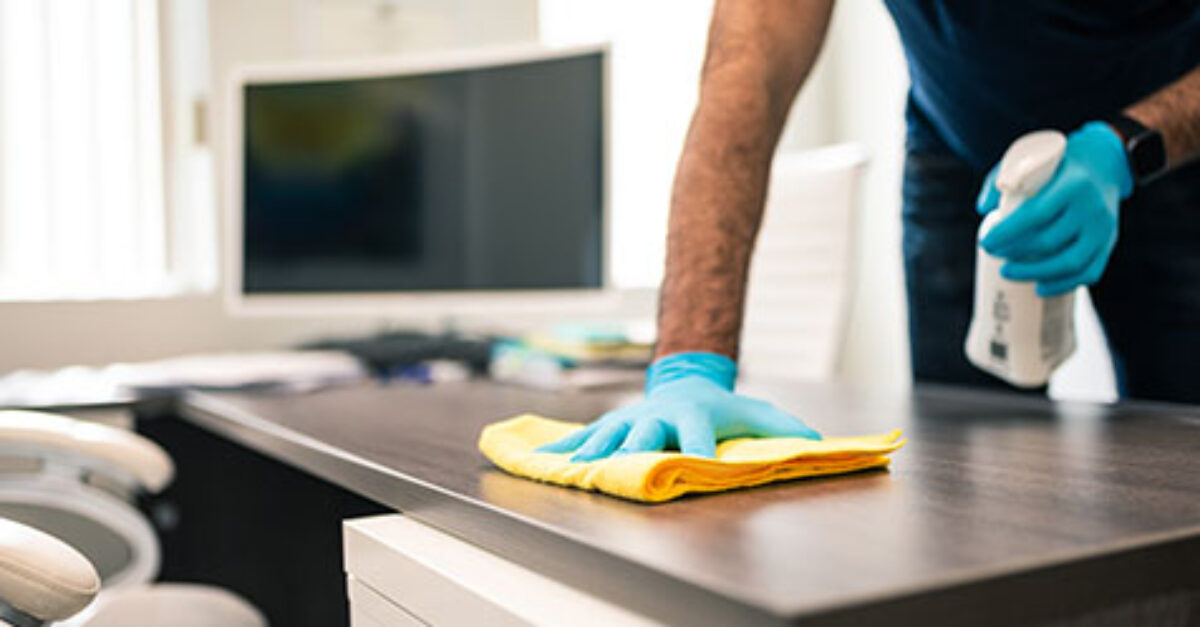Precisely How to Master Everyday Cleaning: Tips for Effective Defrosted and Cleaned Every Few Months and Decluttering
Recognizing the Requirement for Extensively Sanitizing and Disinfecting Often Touched Surface Areas in High-Traffic Areas
In the world of public health and security, the careful disinfection and sanitization of frequently touched surface areas in high-traffic areas stand as paramount steps in protecting against the spread of unsafe pathogens. The significance of this method prolongs much beyond plain cleanliness, delving right into the world of disease prevention and neighborhood health. By exploring the various aspects of surface area sanitation, from the risks related to ignoring cleansing protocols to the effective techniques that can be used, a more clear understanding arises of the important function these techniques play in safeguarding public health and wellness. As we browse this conversation, it ends up being obvious that the implications of detailed surface sanitation reverberate not only within the boundaries of a specific atmosphere yet also resonate on a more comprehensive scale, impacting the health and wellness and security of people throughout varied public settings.
Relevance of Surface Area Sanitation
Emphasizing the extensive disinfection of high-traffic surfaces is critical in keeping a sanitary environment and preventing the spread of hazardous microorganisms. High-touch surfaces such as door deals with, light buttons, elevator switches, and counter tops work as reproducing grounds for microorganisms and viruses. Normal disinfection of these surface areas is vital to reduce the threat of contamination and transmission of diseases.
By applying a robust sanitation protocol, establishments and companies can develop a safer setting for visitors, consumers, and staff members. Proper surface area sanitation not just reduces the spread of contagious conditions but likewise imparts self-confidence in the cleanliness and security of the properties. This aggressive approach demonstrates a commitment to health and wellness and health, which is specifically important in high-traffic areas where the probability of direct exposure to virus is enhanced.
Moreover, surface disinfection plays a vital duty in total infection control strategies. Combined with hand hygiene practices, wearing masks, and maintaining physical distancing, extensive sanitation of high-touch surface areas develops a detailed protection versus the transmission of dangerous bacteria. Focusing on surface disinfection is a vital element of an alternative method to health and wellness and security in shared spaces.
Threats of Neglecting Cleansing Practices
Disregarding detailed sanitation of high-traffic surface areas dramatically enhances the threat of microbial and viral contamination, posturing a significant hazard to the health and wellness of people often visiting these spaces. Failure to apply appropriate cleaning practices can bring about the build-up and spread of hazardous virus, including bacteria and viruses, on frequently touched surfaces such as doorknobs, handrails, lift switches, and counter tops.

In addition, overlooking the value of extensive cleaning not just compromises the well-being of people however also threatens efforts to keep a sanitary and clean setting. It is vital to recognize the significance of appropriate disinfection methods in protecting against the spread of infections and safeguarding public wellness.
Effective Sanitation Techniques
To maintain optimum sanitation and lower the threat of contamination on high-traffic surfaces, utilizing reliable disinfection approaches is vital. One of the most effective and common disinfection techniques is making use of chemical disinfectants. These items can differ in stamina and composition, with some targeting details pathogens like viruses or germs. It is essential to follow the supplier's instructions for appropriate dilution, get in touch with time, and air flow when using chemical disinfectants to ensure their efficiency - Vacuum Carpets.
An additional reliable method is making use of UV-C light. UV-C light has actually been revealed to be effective in killing a broad variety of microbes by disrupting their DNA structure, therefore stopping them from replicating. It is vital to use UV-C light properly, ensuring that the proper strength and exposure time are applied to attain the preferred disinfection results.
Additionally, using vapor cleaning as a sanitation technique can be extremely effective, especially on surface areas that are heat-resistant. Heavy steam can permeate porous surfaces and eliminate germs, viruses, and other microorganisms efficiently. When using steam cleansing, Get More Info it is essential to make sure that the surface area reaches the called for temperature for an adequate quantity of time to guarantee correct sanitation.
Impact on Public Wellness
The upkeep of high standards of sanitation and disinfection on high-traffic surface areas plays an essential function in protecting public health. Regularly touched surfaces in areas with high tramp, such as doorknobs, hand rails, elevator switches, and toilet facilities, offer as breeding premises for dangerous microorganisms.
Efficient cleanliness practices not only secure people from falling sick yet additionally add to the general well-being of culture. Public health and wellness authorities highlight the significance of keeping tidy settings to avoid break outs and contain the spread of illnesses. In high-traffic locations like airports, schools, healthcare facilities, and public transport systems, the effect of strenuous sanitation steps can not be understated. Focusing on the sanitization of often touched surfaces is a proactive approach to promoting public health and wellness and boosting the safety and security of people in shared rooms.
Implementing Normal Cleaning Up Procedures
Quickly setting up and adhering to a consistent routine of cleaning protocols is critical for maintaining the sanitation and safety of high-traffic surface areas. Regular cleansing methods are crucial in stopping the accumulation of bacteria and virus on often touched surfaces, particularly in areas with high foot web traffic. By implementing an organized method to cleaning, companies can properly decrease the danger of illness transmission and develop a healthier atmosphere for workers, consumers, and the my review here public.
To develop a reliable cleansing schedule, it is vital to determine high-traffic areas that require regular interest. These locations might consist of doorknobs, hand rails, lift buttons, bathroom centers, and common devices. Carrying out a routine cleansing routine that targets these surfaces several times a day can dramatically decrease the spread of damaging bacteria and viruses.
Moreover, utilizing suitable cleaner and disinfectants is essential to guaranteeing that surfaces are completely sterilized. Routine training of cleaning up personnel on appropriate cleansing methods and the value of adherence to the cleansing routine is likewise important in preserving a hygienic environment. By focusing on constant cleansing procedures, organizations can promote the health and wellness of people that communicate with these high-traffic surfaces.

Final Thought
In verdict, it is critical to focus on extensive disinfection and sanitization of regularly touched surface areas in high-traffic areas to prevent the spread of harmful virus and maintain public health. It is imperative to identify the relevance of maintaining tidy surfaces in high-traffic areas to guarantee the well-being of the area.
In the realm of public wellness and security, the careful sanitation and sanitization of frequently touched surface areas in high-traffic areas stand as extremely important actions in stopping the spread of harmful virus. By checking out the various elements of surface sanitation, from the threats connected with neglecting cleansing protocols to the efficient methods that can be utilized, a clearer understanding arises of the important duty these practices play in guarding public health and wellness.In addition, utilizing vapor cleaning as a sanitation method can read what he said be extremely effective, especially on surface areas that are heat-resistant. When using heavy steam cleansing, it is important to make sure that the surface area reaches the called for temperature level for a sufficient quantity of time to assure proper disinfection.
In final thought, it is crucial to prioritize extensive sanitation and sanitization of regularly touched surfaces in high-traffic locations to stop the spread of unsafe pathogens and maintain public health and wellness.